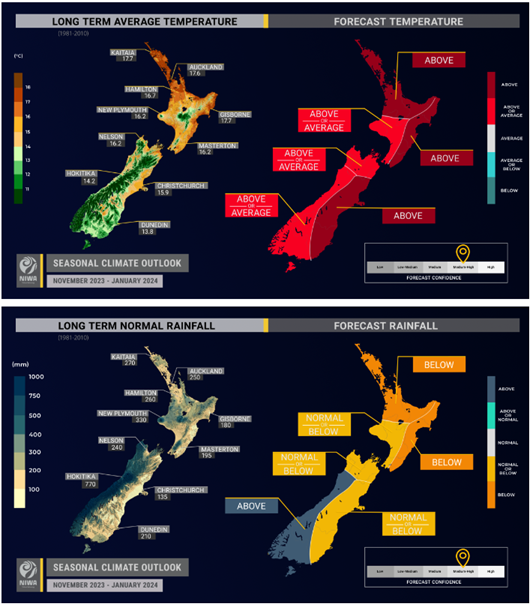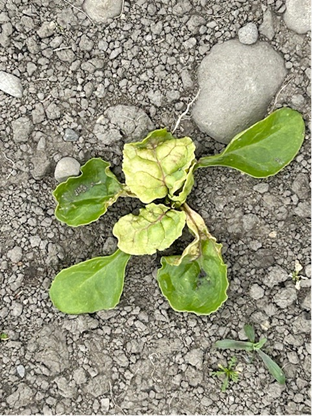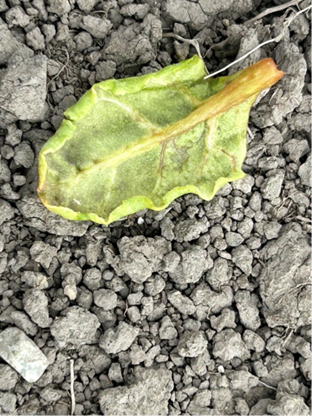Words by Ricky Brown, Ruralco Arable & Pastoral Representative
I write this at the end of November after a spell of clear sunny days and rain forecast in 2 days time will be received willingly. After the last couple of years where winter- early spring has been memorable for heavy periods of rain leading to emergency level problems, it all seems very comfortable. Nothings ever perfect though, I was shown a graph from a property up the Rakaia gorge a few weeks ago showing temperatures 5°C lower than the same time 12 months ago, so early season growth was a bit slow.
NIWA are predicting our current El Nino weather conditions to last throughout summer and probably autumn. So, in eastern New Zealand temperatures will be most likely above average, with high risk of damaging winds and ‘below normal’ rainfall.

NIWA seasonal outlook Nov 23-Dec 24
Pasture
Pasture growth was slow in early spring as soil temperatures struggled to consistently get above 12 degrees. However, a period in early November where evening temperatures remained higher than usual ensured deficits were quickly turned around and it wasn’t long before silage contractors were underway and re-grassing programmes were ramped up. Earlier sown new pasture paddocks struggled to establish and compete with weeds and early weed sprays were slow to reach full effect due to these lower soil temperatures. Regular rainfall will now help with establishment and warmer days are seeing some good herbicide treatment results.
While most grasses are bred to produce good yields in suitable conditions, it has become obvious that not all grasses suit all farmers or the management style you may have on yours. Every farm is different, especially seasonally, and demand and management should be what you discuss when looking at options for re-grassing. It takes 12 months to establish a new pasture and good management through this period will improve persistence, especially through the first summer.
The most important grazing is the first one and should occur once plants cannot be pulled out of the ground, this helps tillering and growth, and enables light to reach clover that can often establish slower in spring sown pasture. Always keep pastures relatively short (less than 3500kg/DM) which helps them tiller but try not to graze them too low reducing leaf and stem material affecting re-growth and plant reserves.
Competition
With such rapid growing conditions currently, we are seeing rapid establishment of weeds in all types of crops and new pasture. Regular monitoring and spraying of any competition in pasture and crops gives it the best possible chance to establish and reach yield potential at a later date. These applications of chemicals should go on at the earliest possible dates, as larger weeds become harder to kill and control. It is also a good time of year to tidy up fence lines, laneways and yard areas, as problem weeds will start seeding through this period spreading viable seeds across pasture and cropping areas.
Cereals and Grain
Grain crops have established well and are starting to move through growth stages very quickly. Cereal crops look very even this year and while slow through the late winter period have had accelerated growth through November. Some cereal crops that are going to be taken for silage are looking very good and just need some good sunshine hours to help with the seed fill stage.
Grain pricing has been weakening throughout the year and no immediate increase appears on the horizon at this stage. At this time of year, it is always good to check storage facilities for leaks, and start to clean silos, sheds etc. for the coming harvest.
Kale
We have seen an earlier lift in Kale sowings due to the kinder weather through October and November. While Fodder Beet has been popular over the last few years due to increased yields over smaller areas, it has been great to see an increase in discussion on kale, and the flexibility it brings to your farming set up including ease of feeding.
The increase in yields over the last few years has been impressive especially given the minimal inputs. Establishment has become easier with the increase in farmers using coated seed for insect protection and the use of pre-emerge weed sprays. We are also seeing a wider range of sowing dates from early October to mid-January and all producing similar yields come the winter, and some good yields also across dryland crops. The ease of management through the growing season and at grazing time has initiated a spike in sales over the last few years.
Fodder Beet
Early sown Fodder Beet crops were slow establishing this year and have endured weed pressure due to the lower soil temperature in early spring. We have seen some Downey Mildew (DM) come into some fields (see image), characterised by whitening leaves with gray spores on the leaf underside. DM will spread quickly if left unattended in the right conditions so contact your agronomy advisor if you spot these symptoms.


Downey Mildew infected Fodder Beet
A drop in soil temperature at this time of year of only a couple of degrees does slow the growth of Fodder Beet and allows future weed strikes once the temperatures warm again. With the warmer soil temperatures, we have seen some aggressive weed growth.
A good weed spray programme remains important, and very important not to wait too long for your next weed spray application. A delay of 2 or 3 days can make larger weeds that little bit harder to kill and while this puts extra pressure on contractors and spray trucks, look to book them that little bit earlier and work in closely with your Ruralco Representative.
Maize
A drop in contract price for Maize from the 22-23 season and been reflected into a drop in maize seed sales. With the earlier consistent weather contractors were able to complete plantings at the desired sowing time. There has been a swing back to maize over the last couple of years and with the development of cultivars, we are seeing options for areas that previously have not suited growing maize due to climate and growing season length.
Contact your local Ruralco Representative to discuss your agronomy options.
Back to Real Farmer